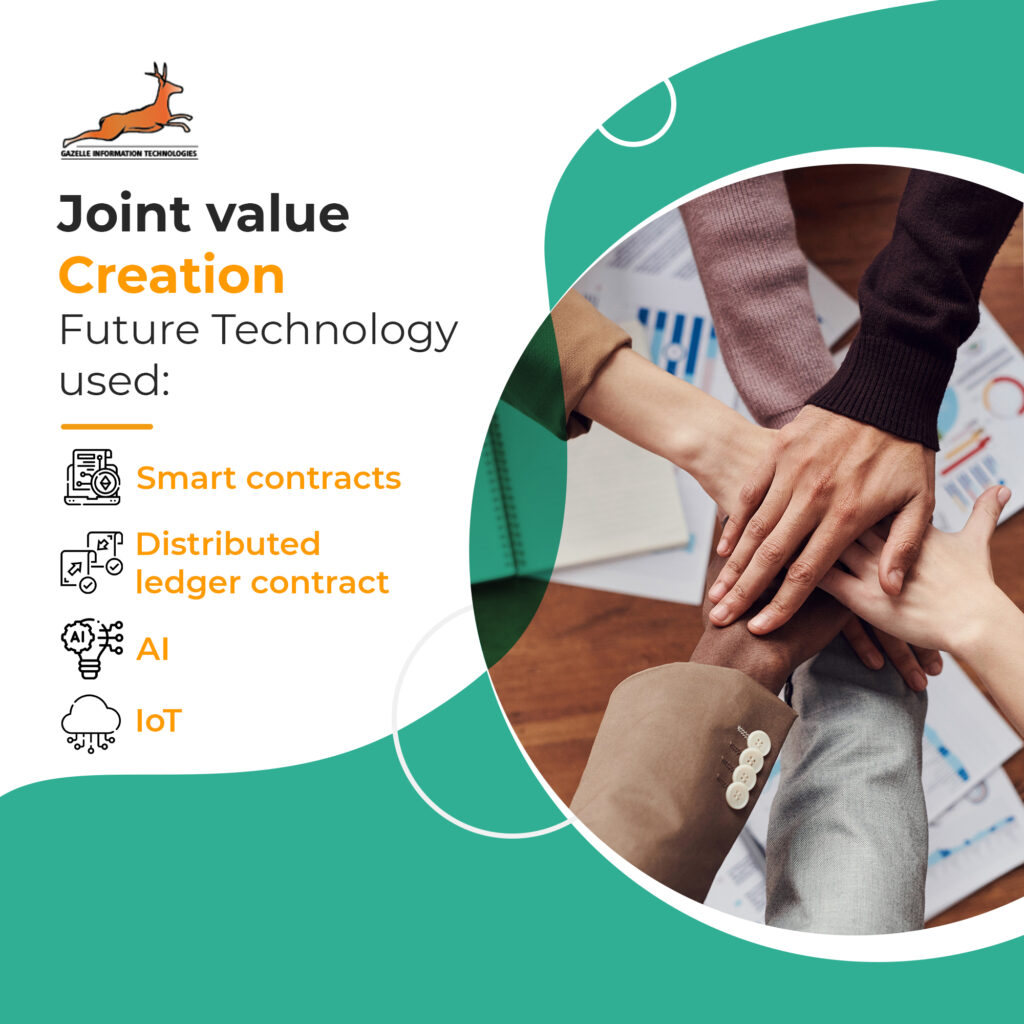Joint Value Creation
Transformation Spectrum

- PAST
- PRESENT
- FUTURE
Technology Used:
- MNC control
Process Followed:
- KAC method
Process Followed:
- Strategic Alliances.
- Amalgamation.
- Statutory Merger.
- M&A Synergies.
 Technology Used:
Technology Used:
- Smart contracts
- Distributed ledger contract
- AI
- IoT
Past
1. Technologies Used
MNC Control – Multinational companies (MNCs) combine diverse mechanisms like planning, standardized procedures and training to control their foreign subsidiaries. Various factors, either within or outside the company, influence the application and effectiveness of control mechanisms in MNCs. Depending on the sphere of focus we have two types of control called Strategic control and Operational control. The parent company (principal) needs to control the operations of the subsidiary companies (agent) to ensure that overall organizational objectives are met.
2. Process followed
KAC method – In quantitative finance, the Feynman–Kac formula is used to efficiently calculate solutions to the Black–Scholes equation to price options on stocks. an accurate and efficient numerical method for computing this probability for systems described by non-autonomous (time-dependent) stochastic differential equations.
Present
Process followed
Strategic alliances – Customers derive value from strategic alliances through the convenience of a one-stop shop. Customers gain access to specialized expertise and knowledge at a fraction of the market price. They also benefit in other ways, such as mutual promotion and referrals to alliance partners.
Amalgamation – Companies often merge to boost shareholder value by entering new markets or gaining greater share in those where they already compete. Mergers are more likely than acquisitions to involve stock-for-stock deals rather than cash buyouts. Diversifying by acquiring a company in a related product market can enable a company to reduce its technological, production, or marketing risks. If combined returns are positive, mergers certainly create value for the overall market, and, therefore, for investors in index funds.
Statutory merger – In a statutory merger, one of the two parties retains its entity, and the other merges into the other by losing its entity. Both legal entities cease to exist when two parties create a new identity in a statutory consolidation. Mergers generate gains by improving resource allocation rather than by reducing tax payments or increasing the market power of the combined firm.
M&A Synergies – Synergies are important because they drive businesses in terms of current finances and operations, new innovations and plans for the future. They will help you identify and understand what is currently happening in the company and what can be improved if the two companies merge.
Future
1. Technologies Used
Smart contracts – The overall purpose of smart contract design is to meet common contractual terms (such as payment terms, liens, confidentiality, and even enforcement), minimize harmful and accidental exceptions, and reduce the need for trusted intermediaries. It saves time and conflict and is also cheaper, faster and more secure way of payment as compared to the traditional system. automate the execution of an agreement so that all participants can be immediately certain of the outcome, without any intermediary’s involvement or time loss.
Distributed ledger contract – Distributed ledgers use independent computers (called nodes) to record, share, and synchronize transactions in their respective electronic ledgers (instead of keeping the data centralized like traditional ledgers). Blockchain organizes data into blocks that are concatenated only in connection mode.
AI – The rise of artificial intelligence technologies has created new opportunities for companies to create more value for their customers by taking a proactive approach, and managing uncertainty, thereby increasing cost efficiency and increasing revenue. The reason AI is so valuable is that it provides elements of valuation creation both within and between every pillar of data transformation. Value is created through a system that generates money, reduces costs, and alleviates the burden on resources and laborers.
IoT – The four layers of the digital architecture provide sources for value creation in the IoT, suggesting that value is created on:
- device layers (physical layers such as hardware and logical capability layers such as operating system);
- network layers (physical transport layers such as cables and logical transmission layers such as network standards);
- the service layer; and
- the content layer. Opportunities in the IoT include creating synergy and efficiency with the connectivity of several service systems. In the resulting system of systems, service systems overlap and create new technical configurations, inviting actors to service creation with differing roles of providers and users.
Joint Value Creation
- Joint Value Creation is an exchange of capabilities and assets between two companies where both achieve what neither could do on its own.
- Whereas Value creation is giving something valuable to receive something else that’s more valuable to you.
The goal of Joint Value Creation
- Creating value for customers helps sell product and service while creating value of shareholder.
- It ensures the future availability of investment capital to fund operation
- It focuses on growing or creating new value together, not capturing larger share
Importance of Joint value Creation
- Joint value creation is the bed rock of businesses, it’s what set you apart from your competition, secure long-term customers.
- Without creating value of your business, your unique offering will be seen at just another commodity.
Future of Technology used for Joint Value Creation
Leading digital technology generate better gross margin, better earnings and better net income.
Digital technology such as Robotics, Artificial Intelligence are already reshaping every stage from goods to anything.
- IoT Solution – It will help to represent the fundamental shift to look at production process.
- Artificial Intelligence (AI) – It is applied to learn and act upon customer activities faster and more accurately.
- 3D Printers – The smart play is to integrate 3D printers for highest value-building potential in customized goods.
Future of Process used for Joint Value Creation
- It is important to determine what value company can provide to its customer
- The joint value that organization receive from customer.
- Successfully managing the joint creation by bringing new product and service.
- The new product is sold and delivered.



 Technology Used:
Technology Used: